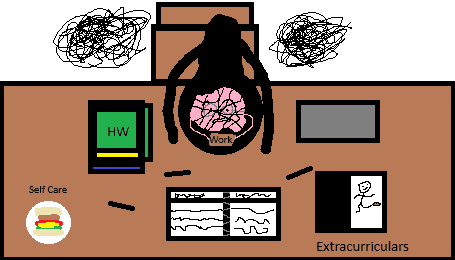It’s time to get swole. With pre-season training right around the corner for winter and spring sports, now is a crucial time for athletes to dive into conditioning. Anyone who has played a sport is likely familiar with conditioning but might not know why it is useful or how it can help a athlete get better and also have a healthier body.
So, what exactly is conditioning? Conditioning Is the process of preparing an athlete’s body to meet specific demands of their sport. It involves training that is focused on improving endurance, strength, agility, mobility and speed. When an athlete’s body is conditioned, they react stronger, faster and better. Conditioning will also help with focuses on intense circumstances. Consistency is key to noticing results as students work to become better athletes
Conditioning prevents injuries in athletes by increasing the strength and resilience of muscles, tendons, ligaments and bones, which better withstand the stress of sports. It also improves coordination, balance and reducing the likeness of falls and poor movement mechanics. Building strength makes it more resistant to tears and sprains. Conditioning is like an engine that you have to build to perform at high levels. Conditioning also provides faster recovery and also enhances tissue repair. Conditioning will also prepare an athlete to train and play at their top peak for a longer period of time. It also helps maintain a healthy routine and can also put you in a good rhythm for your daily routine.
High school athletes who do condition have advantages over athletes that do not. Those that do are able to perform better in their sport and have a lower risk of injury. The work ethic developed through conditioning can translate to an athletes personal life, relationships and school.
Strength and conditioning programs are not just for athletes who participate in contact sports, such as football and wrestling. Athletes in all sports can benefit from a properly designed program. For example, a soccer player can improve speed and agility, while a cross-country runner can increase endurance and stamina.
One of the main goals of conditioning is to minimize risk of injuries. Athletes often face the challenge of recovering from injuries and returning to their sport quickly. Through exercises athletes can regain strength, mobility and functionality after an injury. A program incorporates specific exercises for the injured area recovery at a faster rate and minimizes the risk of another injury and gets the athlete back on track faster. That’s why athletes should warm up to prepare their body for that workout
A coach on a team may develop the best game plan ever seen, but if the athletes on the team are not fast, strong and conditioned at a high enough level the plan will fall apart. Each athlete is unique, and their training program should be personalized to meet that athlete’s specific needs.



























